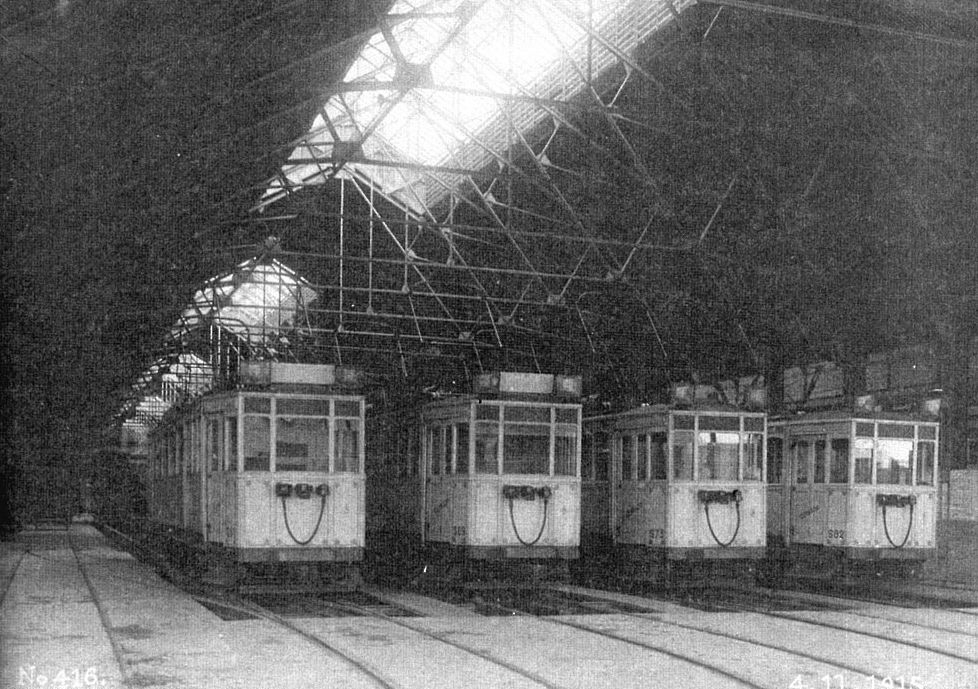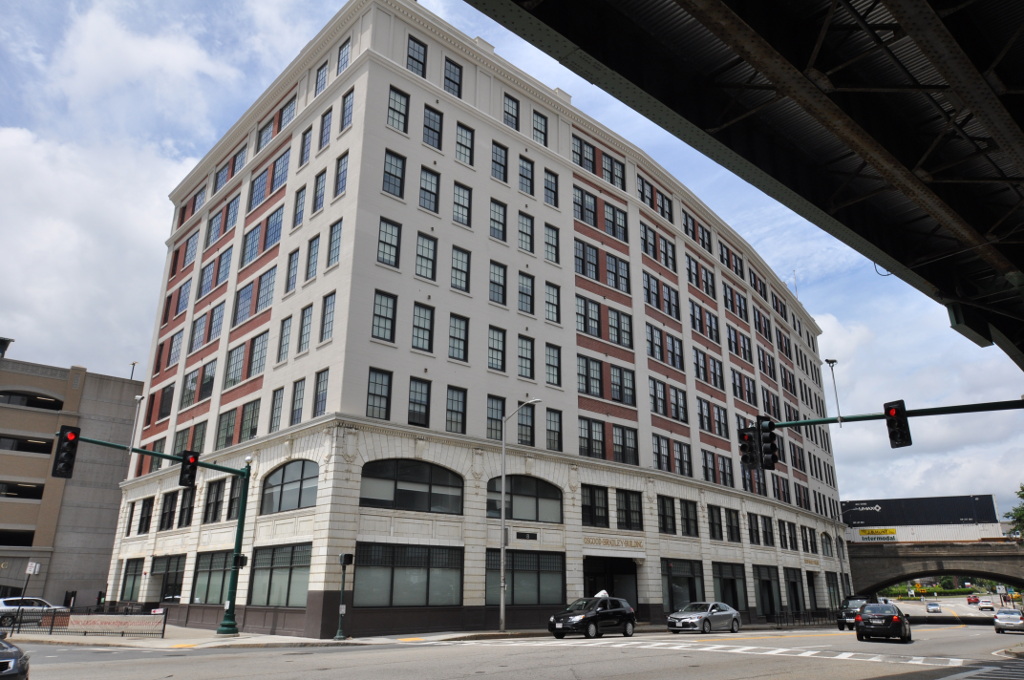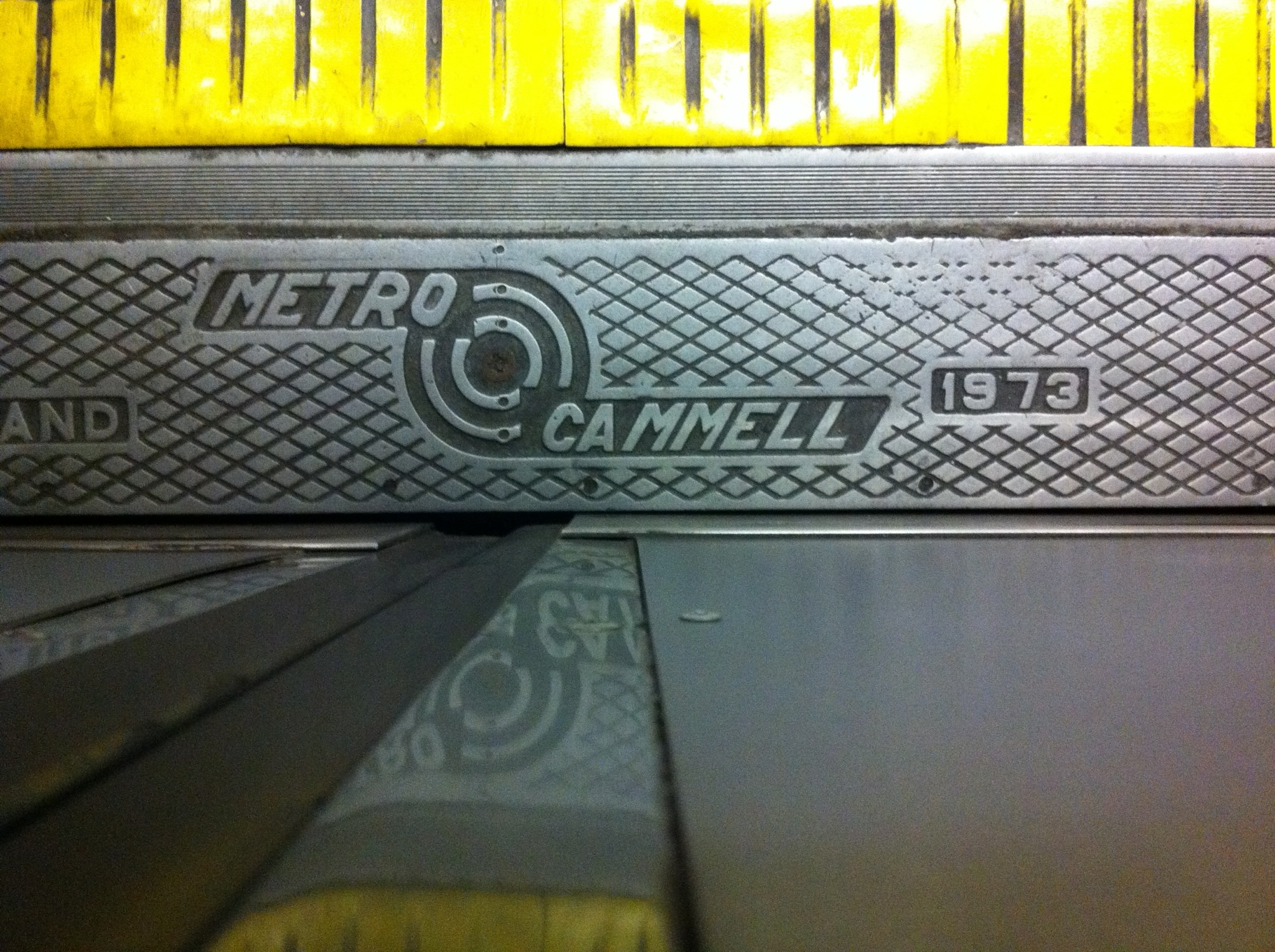|
Buenos Aires Underground Rolling Stock
The Buenos Aires Underground has one of the most diverse metro fleets in the world, and has had some of the oldest models in operation on any network. The network began with a relatively standardised fleet, but throughout its over 100-year-long history, it has seen numerous purchases which have created cases where some lines operate numerous models. Recently there have been increased efforts to modernise and standardise the fleets, with large purchases from China CNR Corporation and Alstom. History Before the nationalisation of the railways and the formation of ''Subterráneos de Buenos Aires'', the original lines of Buenos Aires Underground were built by three private companies, and each bought different rolling stock for their lines. Line A was inaugurated in 1913 by the Anglo-Argentine Tramways Company (AATC)—then owned by the Belgian company Sofina—who owned the vast majority of the city's tramways at that point. Two companies competed to provide the rolling s ... [...More Info...] [...Related Items...] OR: [Wikipedia] [Google] [Baidu] |
Buenos Aires Underground
The Buenos Aires Underground ( es, Subterráneo de Buenos Aires, links=no), locally known as Subte (), is a rapid transit system that serves the area of the city of Buenos Aires, Argentina. The first section of this network (Plaza de Mayo–Plaza Miserere) opened in 1913, making it the 13th subway in the world and the first underground railway in Latin America, the Southern Hemisphere, and the Spanish-speaking world, with the Madrid Metro opening five years later, in 1919. As of 2022, Buenos Aires is the only Argentine city with a metro system. Currently, the underground network's six lines—A, B, C, D, E, and H—comprise of routes that serve 90 stations. The network is complemented by the Premetro line, and the Urquiza suburban line, with 17 more stations in total. Traffic on lines moves on the left because Argentina drove on the left at the time the system opened. Over a million passengers use the network, which also provides connections with the city's extensive comm ... [...More Info...] [...Related Items...] OR: [Wikipedia] [Google] [Baidu] |
UEC Preston
The UEC Preston is a tram/subway car built by the British manufacturer United Electric Car Company for the Anglo-Argentine Tramways Company (AATC) in 1912 for use on its then newly built underground tramway in Buenos Aires, which was later to become Line A of the Buenos Aires Underground. Only 4 trams were built and they served on the line up until their retirement in 1977. History The AATC operated a vast network of trams in Buenos Aires by the early 20th century and the company set out to build the first underground tramway in the city, which later became part of the Underground network. The line would go underground through the centre of Buenos Aires and then continue as an overground tram service using a ramp at Primera Junta station, which leads to what is today the location of the Polvorín Workshop where it continued through the Caballito neighbourhood. The company needed rolling stock to serve the new line and thus took bids from two companies: the United Electric Ca ... [...More Info...] [...Related Items...] OR: [Wikipedia] [Google] [Baidu] |
Spain
, image_flag = Bandera de España.svg , image_coat = Escudo de España (mazonado).svg , national_motto = ''Plus ultra'' (Latin)(English: "Further Beyond") , national_anthem = (English: "Royal March") , image_map = , map_caption = , image_map2 = , capital = Madrid , coordinates = , largest_city = Madrid , languages_type = Official language , languages = Spanish language, Spanish , ethnic_groups = , ethnic_groups_year = , ethnic_groups_ref = , religion = , religion_ref = , religion_year = 2020 , demonym = , government_type = Unitary state, Unitary Parliamentary system, parliamentary constitutional monarchy , leader_title1 = Monarchy of Spain, Monarch , leader_name1 = Felipe VI , leader_title2 = Prime Minister of Spain ... [...More Info...] [...Related Items...] OR: [Wikipedia] [Google] [Baidu] |
Siemens-Schuckert Orenstein & Koppel
The Siemens-Schuckert Orenstein & Koppel (normally abbreviated to Siemens O&K) is an underground car formerly used on the Buenos Aires Underground first built by Siemens-Schuckert and Orenstein & Koppel in 1934, 1937 and 1944 with a smaller number of cars built in Argentina during the 1950s. The Siemens O&K rolling stock made up the entirety of the trains used on the three lines built by the Hispanic-Argentine Company for Public Works and Finances (CHADOPyF) and has since served on every line of the Underground (with the exception of Line B, which uses third rail electrification) from 1934 to 2016, with cars refurbished by the Emepa Group and Alstom continued to function on the network till 2017. As such, it has been the most widely used rolling stock in the Underground's history, and second only to the Brugeoise cars in the number of years served, being the oldest cars in circulation at the time of their retirement in 2016. History The first Siemens-Schuckert Orenstein & Ko ... [...More Info...] [...Related Items...] OR: [Wikipedia] [Google] [Baidu] |
Germany
Germany,, officially the Federal Republic of Germany, is a country in Central Europe. It is the second most populous country in Europe after Russia, and the most populous member state of the European Union. Germany is situated between the Baltic and North seas to the north, and the Alps to the south; it covers an area of , with a population of almost 84 million within its 16 constituent states. Germany borders Denmark to the north, Poland and the Czech Republic to the east, Austria and Switzerland to the south, and France, Luxembourg, Belgium, and the Netherlands to the west. The nation's capital and most populous city is Berlin and its financial centre is Frankfurt; the largest urban area is the Ruhr. Various Germanic tribes have inhabited the northern parts of modern Germany since classical antiquity. A region named Germania was documented before AD 100. In 962, the Kingdom of Germany formed the bulk of the Holy Roman Empire. During the 16th ce ... [...More Info...] [...Related Items...] OR: [Wikipedia] [Google] [Baidu] |
Tokyo Metro Marunouchi Line
The is a subway line in Tokyo, Japan, operated by Tokyo Metro. The line runs in a U-shape between Ogikubo Station in Suginami and Ikebukuro Station in Toshima, with a branch line between Nakano-Sakaue Station and Hōnanchō Station. The official name is . The line was named after the Marunouchi business district in Chiyoda, Tokyo, under which it passes. On maps, diagrams and signboards, the line is shown using the color red (), and its stations are given numbers using the letters "M" for the main line and "Mb" for the branch line. Overview The Marunouchi Line is the second line to be built in the city, and the first one constructed after the Second World War. The route is U-shaped, running from Ogikubo Station in the west of the city via the commercial and administrative district of Shinjuku through to the Marunouchi commercial center around Tokyo Station, before turning back and heading to Ikebukuro. Along with the Ginza Line, it is self-enclosed and does not have any th ... [...More Info...] [...Related Items...] OR: [Wikipedia] [Google] [Baidu] |
Fabricaciones Militares
Fabricaciones Militares, the full name is Fabricaciones Militares Sociedad del Estado (Spanish for Military Industries State Corporation), is a state-owned Argentine arms manufacturer based in Buenos Aires. The company was a government agency under the name Dirección General de Fabricaciones Militares (Directorate General of Military Industries). Founded in 1941, over the years the company has diversified into different areas such as mining, petroleum, rolling stock and petrochemicals. The company is under the direction of the Argentine Ministry of Defence. History The company was created in 1941, under Argentine law 12.709, in order to expand the Argentine defense industry to compensate for the shortfall of imports that came about during the Second World War. In its early years, it produced primarily small arms and munitions whilst aiding in the development of other key industries in the country. The company expanded quickly and would eventually have 14 factories around the cou ... [...More Info...] [...Related Items...] OR: [Wikipedia] [Google] [Baidu] |
Osgood Bradley Car Company
The Osgood Bradley Car Company manufactured railway Passenger car (rail), passenger cars and streetcars in Worcester, Massachusetts. History The company was founded in 1822 to manufacture stagecoaches and sleighs. The company's first railway passenger cars were built for the Boston and Worcester Railroad in 1835. During the American Civil War, the company produced gun carriages for the Union Army. Osgood Bradley was purchased by the Pullman Company in 1930.Rapido Trains (2010) ''The Osgood Bradley Lightweights'' American Flyer cars The Worcester factory is popularly remembered as the manufacturer of the American Flyer (railcar), American Flyer streamliner, streamlined passenger car during the 1930s. Walter Dorwin Teague designed a rounded aircraft-style body for railway cars manufactured of Cor-Ten steel. These cars weighed 15 tons less than conventional heavyweight steel cars. It was hoped these attractive lightweight cars might encourage public use of rail transportatio ... [...More Info...] [...Related Items...] OR: [Wikipedia] [Google] [Baidu] |
Metro-Cammell
Metro-Cammell, formally the Metropolitan Cammell Carriage and Wagon Company (MCCW), was an English manufacturer of railway carriages, locomotives and railway wagons, based in Saltley, and subsequently Washwood Heath, in Birmingham. Purchased by GEC Alsthom in May 1989, the Washwood Heath factory was closed in 2005. The company designed and built trains for the railways in the United Kingdom and overseas, including the Mass Transit Railway of Hong Kong, Kowloon–Canton Railway (now East Rail line), the Channel Tunnel, and the Tyne and Wear Metro, and locomotives for Malaysia's Keretapi Tanah Melayu. Diesel and electric locomotives were manufactured for South African Railways, Nyasaland Railways, Malawi, Nigeria, Trans-Zambezi Railway and Pakistan. DMUs were supplied to Jamaica Railway Corporation and the National Railways of Mexico. The vast majority of London Underground rolling stock manufactured in mid-20th century was produced by the company. It also designed and built ... [...More Info...] [...Related Items...] OR: [Wikipedia] [Google] [Baidu] |
Overhead Line
An overhead line or overhead wire is an electrical cable that is used to transmit electrical energy to electric locomotives, trolleybuses or trams. It is known variously as: * Overhead catenary * Overhead contact system (OCS) * Overhead equipment (OHE) * Overhead line equipment (OLE or OHLE) * Overhead lines (OHL) * Overhead wiring (OHW) * Traction wire * Trolley wire This article follows the International Union of Railways in using the generic term ''overhead line''. An overhead line consists of one or more wires (or rails, particularly in tunnels) situated over rail tracks, raised to a high electrical potential by connection to feeder stations at regular intervals. The feeder stations are usually fed from a high-voltage electrical grid. Overview Electric trains that collect their current from overhead lines use a device such as a pantograph, bow collector or trolley pole. It presses against the underside of the lowest overhead wire, the contact wire. Current collectors ar ... [...More Info...] [...Related Items...] OR: [Wikipedia] [Google] [Baidu] |
Third Rail
A third rail, also known as a live rail, electric rail or conductor rail, is a method of providing electric power to a railway locomotive or train, through a semi-continuous rigid conductor placed alongside or between the rails of a railway track. It is used typically in a mass transit or rapid transit system, which has alignments in its own corridors, fully or almost fully segregated from the outside environment. Third rail systems are usually supplied from direct current electricity. Modern tram systems, street-running, avoid the risk of electrocution by the exposed electric rail by implementing a segmented ground-level power supply, where each segment is electrified only while covered by a vehicle which is using its power. The third-rail system of electrification is not related to the third rail used in dual gauge railways. Description Third-rail systems are a means of providing electric traction power to trains using an additional rail (called a "conductor rail") fo ... [...More Info...] [...Related Items...] OR: [Wikipedia] [Google] [Baidu] |
Urquiza Line
The Urquiza Line is a suburban electric commuter rail line in Buenos Aires, Argentina, operated by the Buenos Aires Underground operator Metrovías. It runs from the Federico Lacroze terminus in the neighborhood of Chacarita, to General Lemos terminus in Campo de Mayo district of Greater Buenos Aires, completing a total journey time of 46 minutes. The line uses third rail current collection and, at present, is used by an average of 75,400 passengers daily. The line operates 20 hours a day, 7 days a week at 8 to 30 minute intervals. This suburban line runs on track once operated by General Urquiza Railway before railway privatisation. In earlier times the line was planned to run into the centre of Buenos Aires, through a long tunnel. But when the tunnel was finally built in 1930, it was taken over by the Underground system as part of Line B, and as a result, suburban passengers had to change at Federico Lacroze, named after its builder, about from the centre. The ramp connec ... [...More Info...] [...Related Items...] OR: [Wikipedia] [Google] [Baidu] |






.jpg)
.jpg)
